White Papers
Workplace Culture in Healthcare: Insights from Agency Nurses


The healthcare industry faces critical staffing challenges in an increasingly competitive environment, spurred by a widening gap in experience among nursing professionals. While agency nurses have traditionally been viewed as temporary solutions to staffing gaps, they represent a valuable opportunity to enhance patient care through their diverse experience and expertise.
This need for experienced professionals is particularly urgent as more novice nurses and new graduates enter bedside roles and staffing shortages have reached critical levels, with an estimated 203,200 new registered nurses needed each year through 2031[7] [8]. In this environment of rapid change and mounting pressure, workplace culture has emerged as a crucial yet often overlooked factor in healthcare delivery and patient outcomes.
To better understand these workplace culture challenges from an external perspective, Amergis conducted a comprehensive survey of thousands of our agency nursing professionals. As contingent workers, these nurses offer a unique and valuable outsider’s perspective on facility cultures across the healthcare system. Their insights provide healthcare leaders with a rare glimpse into how their workplace culture appears to experienced professionals entering their facilities.
By examining the current state of healthcare workplace culture through the lens of our agency nurses’ experiences, we hope this white paper offers healthcare leaders evidence-based recommendations to foster more inclusive, effective, and safety-focused workplace cultures amid the evolving demands of modern healthcare delivery.
The Current State of
Workplace Culture & Inclusion

Our survey data of agency nurses reveals concerning statistics about inclusion in healthcare environments.



These findings highlight several critical challenges:

Divisions between permanent and agency staff

Limited opportunities to participate in decision-making processes

Lost opportunities to share knowledge and best practices
The impact of these challenges can extend beyond individual nurse satisfaction to their ability to provide care. In fact, research from the Health Services Safety Investigations Body reveals that when healthcare workers have negative experiences with integration into a facility’s staff, it can affect their performance and ability to deliver safe and effective patient care [5]. Additionally, a study in the Journal of Nursing Administration supports this claim, finding that a positive nursing work environment decreases the risk of patient adverse events and increases the quality of care [6].
This research on the impact of worker integration and patient safety, paired with the low percentage of agency nurses who reported feeling included in their workplace, highlights why healthcare facilities need to focus on providing a welcoming and inclusive work environment for all staff, including contingent workers.
Quality of Care & Patient Safety

Another factor that seems to influence agency nurses’ feelings toward their workplace environment is patient safety.
Research from the American Nurses Association highlights the importance of establishing a safe and care-focused culture, noting that it is not only essential to the well-being of patients and staff but for facilities as a whole [2]. To help develop this culture facilities may consider:
- Creating professional governance forums where members of the healthcare team can meet collaboratively to problem solve and share best practices with leaders
- Engaging members of the team at all levels in proactive conversations to identify ways to continuously improve
- Setting expectations that contingent staff will be treated as part of the team, and setting the tone that they are here to help relieve staffing burdens
- Holding agencies accountable for the quality of staff they are providing
- Shifting expectations and encouraging agency nurse participation in unit-based communications, staff meetings and social events




These findings indicate an opportunity to improve perceptions of safety and quality care delivery in how facilities foster a culture of safety and high-quality care.
The Value of Agency Nurse Experience

One of the most striking findings from our survey is the wealth of experience present in the agency nursing workforce.
This could enable facilities to optimize coverage during peak demand periods while reducing staff burnout through more manageable shift lengths. This approach could also help attract a wider pool of nursing talent and better align staffing levels with patient census patterns.
Despite the reported high levels of experience among agency nurses, healthcare facilities may not be taking full advantage of the clinical knowledge these contingent workers possess. Our data supports this, revealing that only 28% of respondents said their facility was open to hearing about best practices from their past experiences[1]. This can also help explain why, as previously noted, a majority of respondents did not believe safety and high-quality care were top priorities for their facility.
Our survey data also suggests that healthcare facilities have significant opportunities to leverage the experience of their agency nurses through formal knowledge-sharing programs, as 61% of respondents reported having more experience compared to their colleagues at their most recent assignments[1]. This also further highlights why it may be advantageous for healthcare facilities to take advantage of the level of experience that agency nurses offer.

60% of agency nurses surveyed have over 10 years of nursing experience
This extensive experience, combined with their exposure to various healthcare settings, positions agency nurses as valuable contributors to workplace improvement.

57% of respondents indicated they believe clinical knowledge has stayed the same or decreased
Over the past three years among their colleagues[1].

25% quarter of nurses report they have plans to leave nursing or retire over the next five years[7]
As a result of this trend the nurses field can expect an influx of new graduates entering the workforce which could place an increased burden on existing staff. Agency nurses, with their extensive experience and diverse clinical backgrounds, can help alleviate this burden by sharing their expertise and supporting newer staff members. This can be valuable for healthcare facilities to know, as research from the National Institutes of Health (NIH) suggests that well-educated nurses can reduce the risk of patient mortality, and at times produce health outcomes that are equivalent to those of doctors[4].
Recommendations to Create a Positive Workplace Culture

To help develop a positive workplace culture that benefits from agency nurse expertise, healthcare organizations should consider implementing these key initiatives:

- Optimize onboarding to help agency staff
- Regular check-ins between managers and agency nurses
- Invite agency nurses to participate in shared governance meetings and decision-making processes
- Include agency staff in unit social events (baby showers, birthdays, etc.)



- Encourage agency nurses to attend and participate in staff meetings
- Invite agency nurses to share best practices from other facilities during meetings
- Leverage experienced agency nurses as preceptors to reduce permanent staff burnout
- Establish mentorship opportunities between agency nurses and permanent staff
- Develop forums for sharing cross-facility experiences and insights

- Support open communication and information sharing between agency staff and facility leadership
- Solicit agency nurse feedback to set the tone for a positive work environment and acceptance of contingent staff into the greater team
- Encourage agency nurses to share best practices from their past experiences
- Recognize and reward valuable contributions from agency staff
- Ensure staff assignments help agency nurses feel included in the team

Leadership plays a major role in how well a positive workplace culture is maintained. Research from the NIH reveals that positive leadership practices are the first step in building a positive organizational climate, and that consistently transparent leadership promotes a positive workplace culture. This can be beneficial for healthcare facilities as the study notes that a positive culture builds mutual trust between staff and leaders, which ultimately helps improve employee performance and patient outcomes [3].
Conclusion

Our survey data clearly demonstrates that workplace culture significantly impacts healthcare outcomes, and that agency nurses can provide valuable insights and contributions to improving that culture.
Organizations that prioritize inclusion of both permanent and contingent staff, value the diverse experience that agency nurses bring, and maintain a strong focus on patient safety tend to be better positioned to:

Improve patient care outcomes

Convert agency to
permanent staff to decrease vacancy rates

Enhance organizational
reputation and ability to recruit top talent
As healthcare continues to evolve, creating and maintaining positive workplace culture will become increasingly critical for organizational success. Healthcare organizations must invest in cultural initiatives that support both permanent and temporary staff while maintaining a clear focus on patient safety and quality care. By leveraging the unique perspectives and extensive experience of agency nurses, facilities can create more robust and effective workplace cultures that benefit all stakeholders.
References
- Amergis Healthcare Staffing. (2024). Key insights from 2024 Amergis nursing professionals survey. Amergis Healthcare Staffing. https://www.amergis.com/resources/key-nursing-insights-2024-survey/
- American Nurses Association. (2023, February 13). Safety strategies every nurse leader needs to know. American Nurses Association. https://www.nursingworld.org/content-hub/resources/nursing-leadership/safety-in-nursing/
- Bayot, M. L., Tadi, P., & Vaqar, S. (2024, August 11). Work culture. National Institutes of Health. https://www.ncbi.nlm.nih.gov/books/NBK542168/
- Coster, S., Watkins, M., & Norman, I. J. (2018). What is the impact of professional nursing on patients’ outcomes globally? An overview of research evidence. International Journal of Nursing Studies, 78, 76–83. https://pubmed.ncbi.nlm.nih.gov/29110907/
- Health Services Safety Investigations Body. (2024). Workforce and patient safety: Temporary staff – integration into healthcare providers. Health Services Safety Investigations Body. https://www.hssib.org.uk/patient-safety-investigations/workforce-and-patient-safety/third-investigation-report/
- Nascimento, A., & Jesus, É. (2020). Nursing Work Environment and Patient Outcomes in a Hospital Context. The Journal of Nursing Administration. https://journals.lww.com/jonajournal/abstract/2020/05000/nursing_work_environment_and_patient_outcomes_in_a.7.aspx
- Smiley, R. A., Allgeyer, R. L., Shobo, Y., Lyons, K. C., Letourneau, R., Zhong, E., Kaminski-Ozturk, N., & Alexander, M. (2023). The 2022 National Nursing Workforce Survey. Journal of Nursing Regulation. https://www.journalofnursingregulation.com/article/S2155-8256(23)00047-9/fulltext
- U.S. Bureau of Labor Statistics. (2024). Registered nurses. U.S. Bureau of Labor Statistics. https://www.bls.gov/ooh/healthcare/registered-nurses.htm
- Quo similique voluptates illo. Ut cumque quibusdam quia. Quibusdam et officiis dolorem dignissimos alias. Iusto ut voluptates sint animi deleniti sequi voluptatem corporis. Quia voluptatum fuga. Occaecati est nam ab in aspernatur molestias vero earum.
Do you need help quickly finding qualified healthcare professionals for your facility ?
Get the latest blogs, news and company updates
Want to get the latest staffing related news and updates? Subscribe to our resources to get insights sent straight to your inbox.